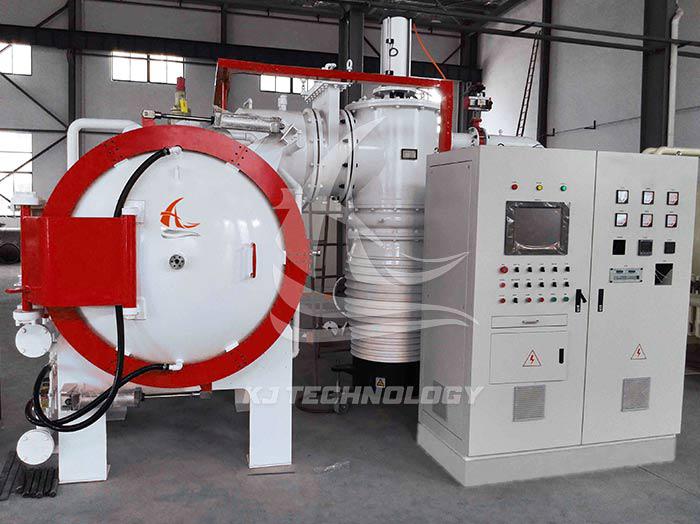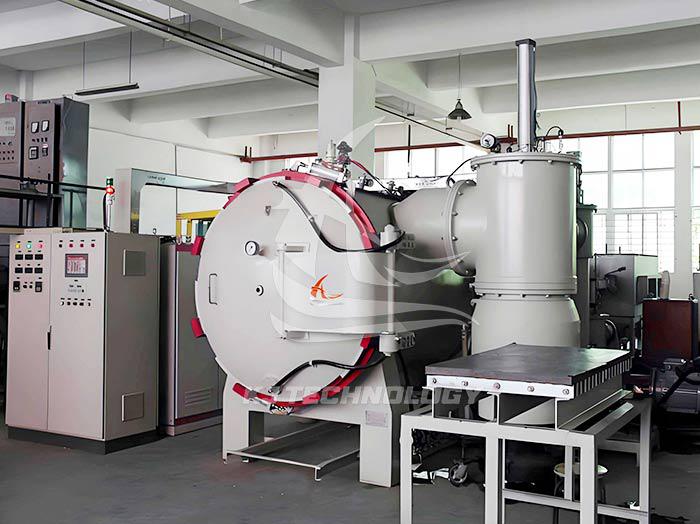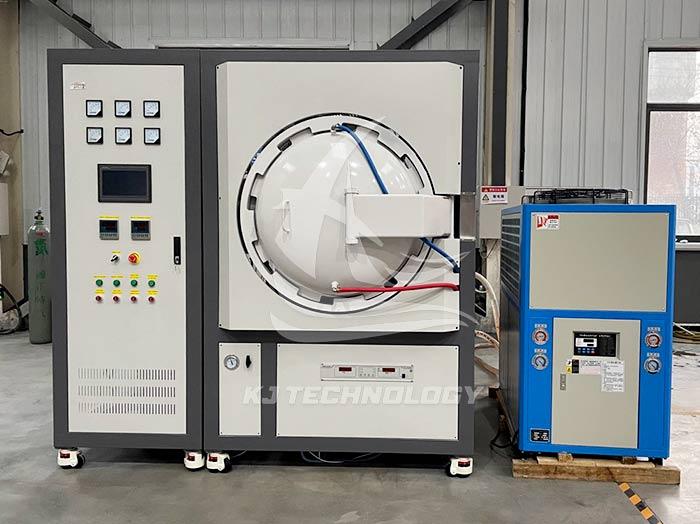What are the core advantages of vacuum atmosphere heat treatment furnace?
 07-14-2025 Author: KJ technology
07-14-2025 Author: KJ technology
The core advantage of vacuum atmosphere heat treatment furnace lies in its precise coordination of vacuum environment and atmosphere control, which makes it irreplaceable in the field of material heat treatment, specifically reflected in the following aspects:
1. Vacuum environment: Pure treatment without oxidation and low pollution
Avoid oxidation and decarbonization
In a vacuum state, the oxygen partial pressure is extremely low, which can effectively prevent metal materials from oxidizing at high temperatures (such as forming oxide films on the surface) or decarburization (such as reducing the carbon content on the surface of steel), thereby preserving the original mechanical properties of the material. For example, after vacuum heat treatment, the surface hydrogen embrittlement risk of titanium alloy is reduced, and the fatigue life is increased by more than 30%.
Reduce the addition of impurities
In processes such as semiconductor material growth and optical glass melting, a vacuum environment can significantly reduce impurities such as water vapor and nitrogen in the atmosphere, ensuring material purity. For example, when the vacuum degree reaches 133Pa, it is equivalent to a dew point with a water content of -40 ℃, which is much lower than the conventional heat treatment conditions.
Promote the elimination of volatile substances
Vacuum can accelerate the discharge of adsorbed gases, residual gases in pores, and reaction products in materials, thereby increasing density. For example, the porosity of hard alloys sintered in vacuum is significantly lower than that of hydrogen protected sintering.
2. Atmosphere control: flexible adaptation to diverse process requirements
MIG
Introducing inert gases such as nitrogen and argon can prevent reactive metals (such as beryllium and thorium) from reacting with oxygen, while also avoiding material volatilization and loss at high temperatures. For example, aluminum nitride ceramics need to be densified and sintered under nitrogen protection.
Restoration atmosphere support
Hydrogen and other reducing gases can be used for processes such as deoxidation treatment of hard alloys and surface reduction of metals. For example, sintering transparent alumina ceramics in a hydrogen atmosphere can promote grain growth and improve light transmittance.
Special reaction atmosphere regulation
Surface modification processes such as carburizing and nitriding are achieved by mixing gases (such as methane+nitrogen), or material synthesis is carried out by simulating specific chemical environments. For example, the positive electrode material of lithium batteries is optimized for performance orientation through precise gas control in a vacuum atmosphere furnace.
3. Temperature management: dual guarantee of precision and uniformity
High precision temperature control
Adopting PID intelligent temperature control system and high-sensitivity sensors, the temperature control accuracy of ± 1 ℃ is achieved, meeting the strict requirements of materials for heat treatment curves. For example, the turbine blades of an aircraft engine need to maintain temperature uniformity of ± 2 ℃ at 1000 ℃ to ensure consistency in tissue and performance.
Rapid heating and controllable cooling
The heating rate can reach 1 ℃/h to 40 ℃/min, combined with air or water cooling systems, to achieve rapid quenching or step cooling and control the material phase transition process. For example, after vacuum quenching, the hardness uniformity of mold steel increases by 2 HRC units.
Energy saving and efficient design
Imported alumina polycrystalline fiber furnace and double-layer water-cooled shell structure reduce heat loss and idle energy consumption by more than 20%. For example, a 1600 ℃ high-temperature furnace adopts a heat recovery system, which increases energy utilization by 15%.
4. Process flexibility: covering the entire heat treatment process requirements
Multi material adaptability
Support annealing, quenching, tempering, sintering and other processes for multi-element materials such as metals (such as high-temperature alloys, titanium alloys), ceramics (such as alumina, silicon nitride), composite materials (such as metal based, ceramic based), etc.
Modular Function Expansion
It can integrate a vacuum atmosphere composite system to switch between vacuum, inert gas, or reactive gas environments within the same equipment, adapting to multiple process requirements. For example, a certain model of furnace supports switching between vacuum sintering and nitrogen quenching processes within 10 minutes.
Automation and Intelligence
Equipped with a computer control system, it supports functions such as program temperature rise, historical curve storage, remote diagnosis, etc., reducing human operation errors. For example, multiple devices can be managed through RS-485 communication interface to achieve real-time monitoring of production data.
5. Typical application scenario: Comprehensive coverage from laboratory to industrial production
aerospace field
Used for vacuum solution and aging treatment of high-temperature alloy blades, to maintain a yield strength of 800MPa at 1000 ℃, meeting the extreme working conditions of engines.
Semiconductor and Electronics Industry
Annealing transistors in a nitrogen atmosphere to reduce metal migration and improve device reliability; Fiber optic materials eliminate bubbles in a vacuum environment to achieve low loss transmission performance.
Research and development of new energy materials
The positive electrode material of lithium-ion batteries removes impurities through vacuum sintering, improving energy density and cycling stability; Defect free synthesis of proton exchange membrane materials for fuel cells in an inert atmosphere.
High end manufacturing and scientific research
Special processes such as powder forming and sintering of refractory metals (such as tungsten and molybdenum) and oxygen atmosphere sintering of transparent ferroelectric ceramics all rely on the precise control ability of vacuum atmosphere furnaces.








